Carl Zimmer's Blog, page 39
September 24, 2012
When Food Webs Flip: My New Story in Scientific American
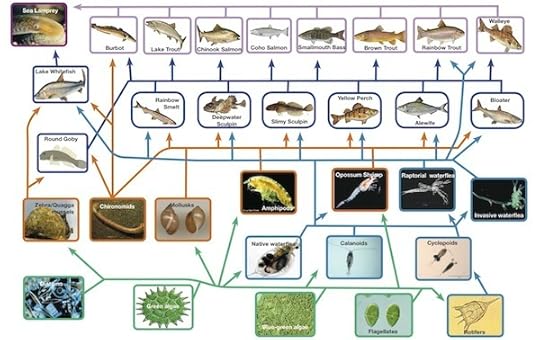 New England’s fisheries are in such bad shape that the Department of Commerce has now declared them a disaster. It’s not merely the sheer volume of fish we’re catching that explains the woeful state of these fish stocks. Even in places where governments have established strict limits on fishing, some fisheries have been unexpectedly slow to recover. That’s because fish don’t exist in isolation. They’re part of ecological networks. And when we hammer these networks, they can suddenly flip into a new state. Getting them back to their old state can be surprisingly hard.
New England’s fisheries are in such bad shape that the Department of Commerce has now declared them a disaster. It’s not merely the sheer volume of fish we’re catching that explains the woeful state of these fish stocks. Even in places where governments have established strict limits on fishing, some fisheries have been unexpectedly slow to recover. That’s because fish don’t exist in isolation. They’re part of ecological networks. And when we hammer these networks, they can suddenly flip into a new state. Getting them back to their old state can be surprisingly hard.
In the new issue of Scientific American, I’ve written a feature on recent research into how ecological networks flip, along with attempts to detect warning signs of food webs on the brink (subscription required).
[Image: Lake Michigan food web/NOAA]

September 21, 2012
From Darwinius to GMOs: Journalists Should Not Let Themselves Be Played
I don’t like starting the weekend in a state of infuriation, but here we are.
On Wednesday, French scientists had a press conference to announce the publication of a study that they claimed showed that genetically modified food causes massive levels of cancer in rats.
The paper appeared in a peer-reviewed journal. That being said, outside experts quickly pointed out how flimsy it was, especially in its experimental design and its statistics. Scicurious has a good roundup of the problems at Discover’s The Crux.
But those outside experts were slow to comment in part because reporters who got to see the paper in advance of the embargo had to sign a confidentiality agreement to get their hands on it. They weren’t allowed to show it to other experts.
We’ve seen this sort of bad behavior before from scientists. In 2009, paleontologists held a spectacular press conference at the American Museum of Natural History (complete with Mayor Bloomberg in attendance) to tout a primate fossil that was the centerpiece of a big cable TV show that aired that week. The paper describing the fossil was released minutes before the conference. Only one reporter managed to get her hands on the paper earlier ...

Irish cannibals and Neanderthal sex: Just how big is our species?
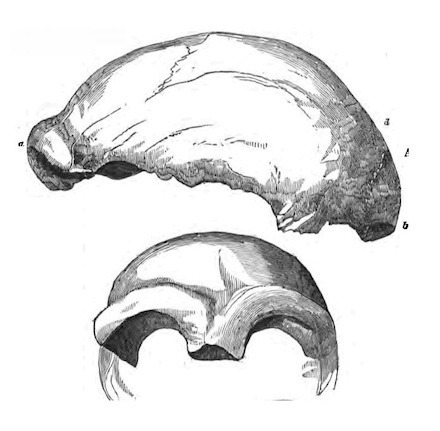 When the first fossils of Neanderthals came to light 155 years ago, they raised a tough question: did they come from a member of our own species, or a separate one?
When the first fossils of Neanderthals came to light 155 years ago, they raised a tough question: did they come from a member of our own species, or a separate one?
For all the progress scientists have made in studying Neanderthals since then, the answer remains tough–in part because it’s not that easy to define a species.
NOVA asked me to write about this enduring question. You can read my answer here.

September 19, 2012
The Birth of the New, The Rewiring of the Old
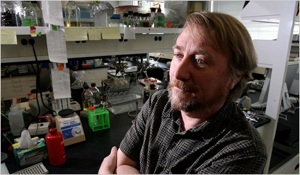 In 1988, Richard Lenski, an evolutionary biologist now at Michigan State University, launched the longest running experiment on natural selection. It started with a single microbe–E. coli–which Lenski used to seed twelve genetically identical lines of bacteria. He placed each line in a separate flask, which he provisioned with a scant supply of glucose. The bacteria ate up the sugar in a few hours. The next day, he took a droplet of microbial broth from each flask and let it tumble into a new one, complete with a fresh supply of food. The bacteria boomed again, then starved again, and then were transferred again to a new home. Lenski and his colleagues have repeated this procedure every day for the past 24 years, rearing over 55,000 generations of bacteria.
In 1988, Richard Lenski, an evolutionary biologist now at Michigan State University, launched the longest running experiment on natural selection. It started with a single microbe–E. coli–which Lenski used to seed twelve genetically identical lines of bacteria. He placed each line in a separate flask, which he provisioned with a scant supply of glucose. The bacteria ate up the sugar in a few hours. The next day, he took a droplet of microbial broth from each flask and let it tumble into a new one, complete with a fresh supply of food. The bacteria boomed again, then starved again, and then were transferred again to a new home. Lenski and his colleagues have repeated this procedure every day for the past 24 years, rearing over 55,000 generations of bacteria.
I first reported on Lenski’s experiment 12 years ago, and since then I’ve revisited it every few years. The bacteria have been evolving in all sorts of interesting ways, and Lenski has been able to reconstruct the history of that evolution in great detail, thanks to a frozen fossil record. Every 500 generations Lenski and his students sock away some bacteria from each flask ...

September 18, 2012
The Slow, Slow Road to De-Discovery
The virus known as XMRV does not cause chronic fatigue syndrome.
Achieving this particular bit of knowledge has taken a pretty spectacular couple of years.
In October 2009, Judy Mikovits, a scientist then at the Whittemore Peterson Institute in Reno, Nevada, and her colleagues published a startling paper. They found that 68 out of 101 people suffering from chronic fatigue syndrome (also known as myalgic encephalomyelitis) carried a virus called XMRV. Only 8 out of 218 healthy people had it. That’s 67% versus 3.7%. Mikovits and her colleagues raised the possibility that the virus played a part in the disorder, which affects an estimated 60 million people. If that were true, then there might be a straightforward way to treat people: wipe out the offending virus.
Very quickly, a number of other scientists replicated the experiment. One team found evdience of a different virus in some of their subjects–not XMRV. The other scientists couldn’t find any virus at all that was present in any significant number of people with chronic fatigue and not in people without it.
With remarkable speed, the study and the follow-up research gave rise to a fierce controversy. Critics dismissed Mikovits’s work as nothing more than contamination (the virus is ...

September 5, 2012
Another Science Hurricane: A Massive Survey of the Genome
Every now and then we science writers come face to face with how much science there is to write about–and how limited our powers to write about it are. This week, I’m on the road to report a magazine feature–a week that just so happens to be the one that a team of scientists chose to publish dozens of papers at once on the nature of the human genome. The purpose of the project, called ENCODE, is to systematically measure the function of every bit of the human genome. ENCODE has been going on for quite some time. In 2008, I wrote about the first chunk of results from ENCODE in the New York Times, and I followed up in 2010 here with a report on the work of some skeptics who challenged some of ENCODE’s results. If I wasn’t already insanely busy with another story, I’d be all over this one.
If you’re interested in the debate over how our DNA works, let me direct you to some coverage:
Ed Yong blogs the story, then updates with responses from skeptics
University of Toronto biochemist Larry Moran explains why he doesn’t buy the results.

August 29, 2012
Why Debunking ESP Can Be Interesting

Last year, a Cornell University psychologist named Daryl Bem published a study which he claimed showed that events in the future can influence our minds at the present. I wrote about the study in an essay for the New York Times on the workings of science–how science relies on replication to move forward, and how scientists often struggle to make this happen. When other scientists replicated Bem’s experiments, they failed to get his results. But they found it difficult to get their results published in prominent journals, which frown on replication studies.
Over at Science-Based Medicine, Steve Novella writes about a newly published replication study appearing in the same journal where Bem’s original research was published. Once again, the scientists failed to get Bem’s results. That the future does not affect the present is not exactly news, but Novella’s post is still very much worth reading, because he takes this moment as an opportunity to talk about the reason that studies like Bem’s turn out the way they do in the first place, and how scientists can design experiments better in the future. Check it out.
[Image: Photo ...

August 23, 2012
Hello, Norway! Two talks in Oslo next week
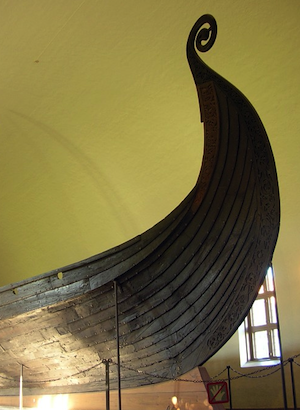 Next Friday (August 31) I have the honor of taking part in the Kristine Bonnevie Lecture, an annual lecture held at the University of Oslo to honor the first female professor in Norway. I’ll be speaking along with Cori Bargmann of Rockefeller University, who has done hugely important research on the links between the anatomy of the brain and how animals behave. Details are here.
Next Friday (August 31) I have the honor of taking part in the Kristine Bonnevie Lecture, an annual lecture held at the University of Oslo to honor the first female professor in Norway. I’ll be speaking along with Cori Bargmann of Rockefeller University, who has done hugely important research on the links between the anatomy of the brain and how animals behave. Details are here.
On Saturday (September 1) I’ll be giving a public lecture about A Planet of Viruses at Oslo’s House of Literature (Litteraturhuset). Details are here.
If there are any Loom-readers in Norway (perhaps a few?), I hope to see you in Oslo.

August 20, 2012
Darwin’s Drugs: My Article in Today’s New York Times
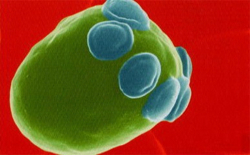
Two years ago, I wrote in the New York Times about scientists exploring evolution to discover the function of our genes. We share a 1.2 billion-year-old common ancestor with fungi, for example, and it turns out that fungi (yeast in particular) have networks of genes remarkably similar to our own.
Back in 2010, the scientists I interviewed told me they hoped to use this method to find new drugs. In today’s New York Times, I write about how they’ve delivered on that promise. It turns out that a drug that doctors have used for over 40 years to kill fungi can slow the growth of tumors. It’s a striking illustration of how evolution provides a map that allows medical research to find their way to promising new treatments. Check it out.

August 17, 2012
West Nile Virus: The Stranger That Came To Stay
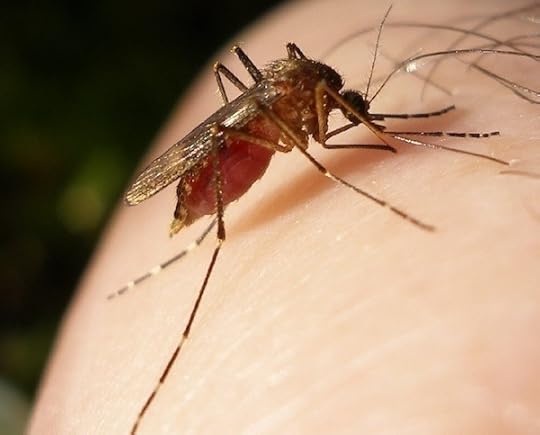 In today’s New York Times, Manny Fernandez and Donald McNeil report that West Nile virus is wreaking havoc in Dallas. This summer, 200 people have become ill in Dallas County, and 10 people have died so far. Those are worryingly high numbers in a single Texas county of 2.4 million people, and so Dallas has declared a state of emergency. The city is now swept up in a debate about the safety of widespread pesticide spraying to kill off mosquitoes, which carry the virus. Fernandez and McNeil quote public health experts who warn that it’s probably a harbinger of things to come throughout the country this year.
In today’s New York Times, Manny Fernandez and Donald McNeil report that West Nile virus is wreaking havoc in Dallas. This summer, 200 people have become ill in Dallas County, and 10 people have died so far. Those are worryingly high numbers in a single Texas county of 2.4 million people, and so Dallas has declared a state of emergency. The city is now swept up in a debate about the safety of widespread pesticide spraying to kill off mosquitoes, which carry the virus. Fernandez and McNeil quote public health experts who warn that it’s probably a harbinger of things to come throughout the country this year.
For many young people in the United States, West Nile virus has been a fact of life for as long as they can remember. But before 1999, there was no West Nile virus in this country. None. Its arrival and its spread are a sobering lesson in how quickly diseases can establish themselves.
To offer some background to today’s news, I am reprinting an essay from my 2011 book, A Planet of Viruses , about how West Nile came to America.





















